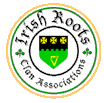Knowles Family
in the Caribbean
Jamaica Connection:
Sir Charles Knowles was Governor of Jamaica from 1749-1752. Knowles was first married to Mary, the daughter of John Alleyne of Barbados. His married his second wife, Maria Magdalena Theresa, daughter of Henri Francois of Aix-la-Chapelle in 1750.
Charles, Jr., born at Kingston, Jamaica in 1754 was the son of Charles and Maria Magdalena. This Charles (1754-1828) was also to have quite an illustrious career in the Royal navy coming eventually, like his father before him, to the position of admiral; both, in their respective times, were to be knighted by their sovereign.
Bahamas Connection:
Settlement of the Bahamas actually followed that of Bermuda and the thirteen American colonies. Bermuda was settled by the English in 1612. Like the thirteen colonies on the mainland, Bermuda served as a refuge for dissenters, seeking an escape from religious persecution in England during the seventeenth century. Religious trouble continued in Bermuda between the Nonconformists and the Anglican majority. This lead to the formation of the “Company of Eleutherian Adventurers,” headed by William Sayle, a former Governor of Bermuda. They sought to establish a colony where full religious freedom could be enjoyed.
A band of seventy set sail for “Segaboo Bahama” in 1647. Sayle later renamed the island “Eleuthera,” derived from the Greek word for freedom. The settlement struggled, but was sent help by Governor Winthrop of Massachusetts. The Eleutherian Adventurers never received the charter they sought from England because many of their shareholders were followers of Cromwell, in disfavor with the ruling Restoration in England.
Sixty more Puritans were expelled from Bermuda following the execution of Charles I in England, and followed the original settlers to Eleuthera. Many of them returned to Bermuda when politics cooled off there. The young colony had a falling out, and eventually split, the original colony staying on Eleuthera, and a splinter group settling on St. Charles Island, founding Spanish Wells. In 1657, Sayle returned to England with many of his followers, leaving behind families whose names have spread throughout the Bahamas. Among them, Pinder, Sands, Sawyer, and Knowles, all prominent names in the Abacos today.
Following the Restoration, Bermuda became overcrowded, and exported more settlers to the Bahamas. Plantations were established on Sayle’s Island, later renamed New Providence. By 1666, New Providence had nine hundred settlers.
In 1670, the Bahamas were granted to six Lord Proprietors
of the Carolinas, being removed from Bermuda’s jurisdiction.
This led to the establishment of a plantation type economy based upon
cotton, worked by slave labor. The
Abacos were generally overlooked during this plantation type of development,
probably because the small plots of soil, although fertile, were not well suited
to large scale farming. Thus we see
at this point the dominant history of Abaco follows a different thread from much
of the rest of the Bahamas. http://www.abacoguide.net/his&geo.htm
St. George Church, Nassau, Bahama
The History of St. George’s Church begins when
Donald Roland Knowles humble, dedicated and visionary Bahamian priest, was
appointed Rector of St. Matthew’s Parish, Nassau, New Providence 1938. Today,
some fifty years later, St. George’s Anglican Church represents an impressive
institution that continues to address the spiritual, educational and social
needs of its members and community.
As
fate would have it, the Rector, Fr. Donald Knowles, spent some years in Long
Island and had intimate knowledge of the value of mission parishes to far flung
congregations. He fully endorsed the proposal and committed himself to the task
of providing a church in the community. What followed was a flurry of fund
raising activities by the members, neighbors and friends of the community.
Initially two lots were purchased on Ludlow Street, however later there was a
preference that the church should be located on the main road. Finally a lot of
land was purchased from Mr. Samuel Knowles on Montrose Avenue. http://www.stgeorgebah.org/History.htm

